
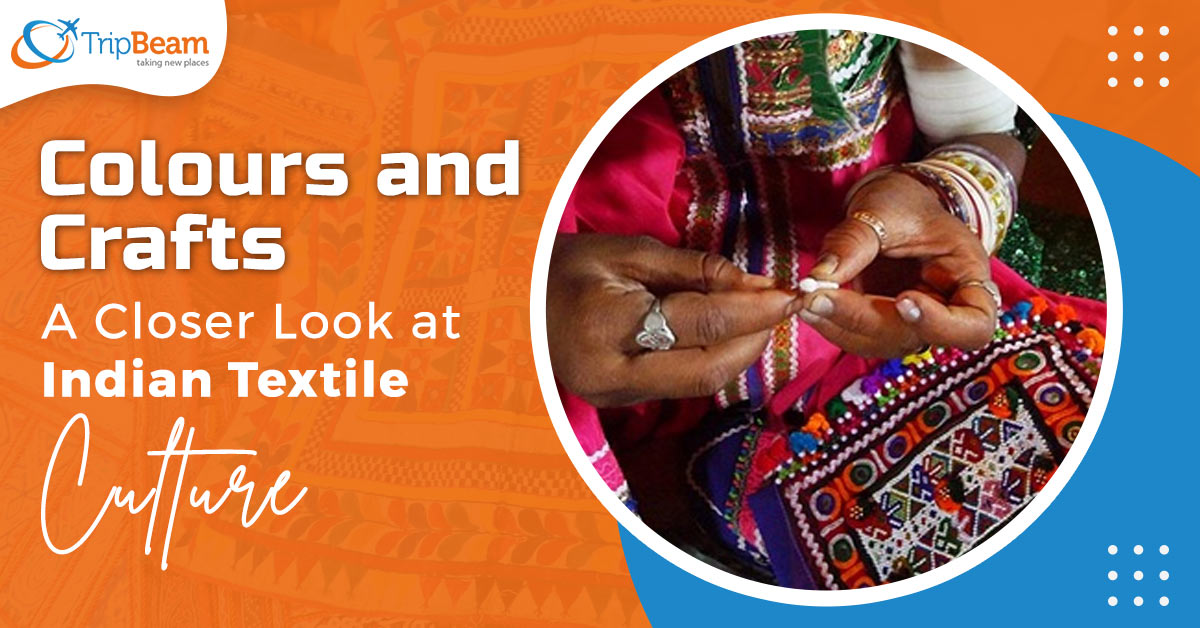
From fancy silk in Varanasi to simple handwoven Khadi, we are diving into a world of diverse Indian textile. Learn about different weaves, patterns, and dyeing tricks. See how each thread connects to India’s rich culture. Join us in celebrating the skilled hands that weave these stories into every fabric.
Additionally, you can book cheap flights to India from Canada with us. Tap on Tripbeam and get the most affordable deals on flight booking.
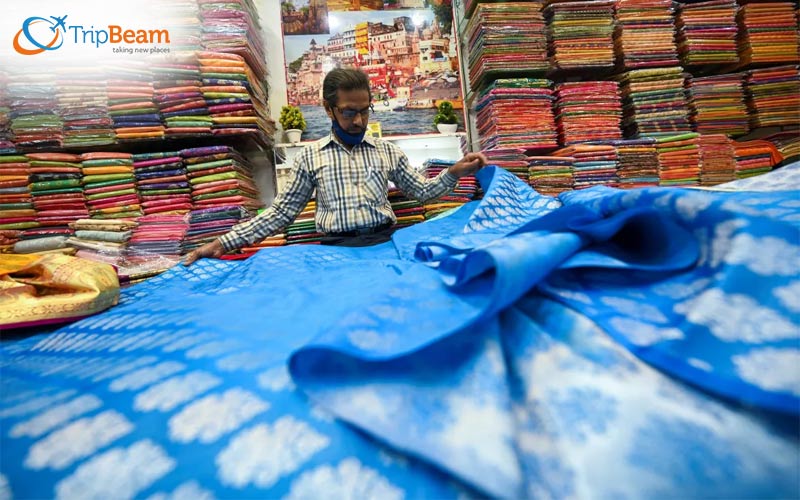
As one of the most prominent and prized textile crafts, Banarasi Silk Weave has a long history. Zari and Brocade are two primary sorts of work that lay its cluster-based foundation. Their production techniques, such as Katan (Pure Silk), Kora (Organza), Brocade, Jamdani, Tanchoi, Jangla, and others, define their wide range of patterns, which include flowers, Jali, Butidar, geometric patterns, Kalga & Bel, Jhallar, and more. The delicate, sumptuous needlework has evolved into the highly valued, specialised art it is now because of shifting trends and tastes in patterns, kinds, and merchandise.
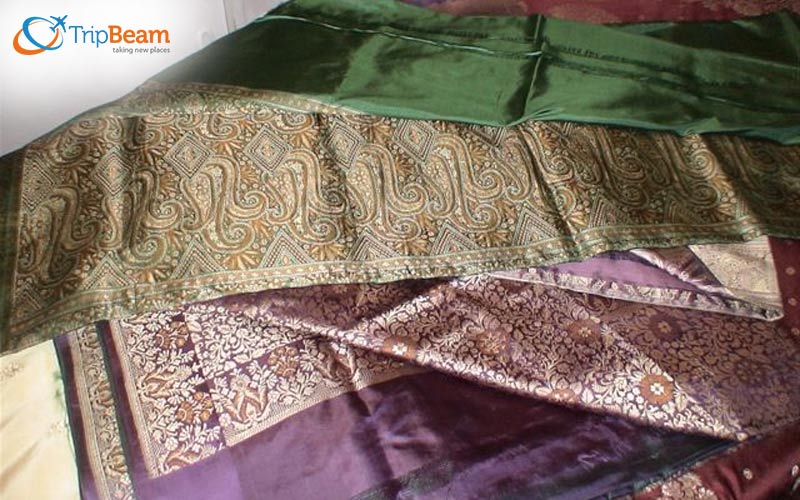
Tanchoi silk weaving, Gujarat, is said to have been brought in by China because Amru Brocades are an exclusive craft to Surat. The weavers in Banaras also created cheaper versions by introducing Zari work, which evolved into the Zari Tanchoi, Atlas or Gilt, Mushabbar, and so on, with the technique being integrated and innovative into Indian versions and traditional styles as needed.
Famous for their one-of-a-kind weaves with a dual colour warp, two to five weft colours, and elaborate commonly used designs of flora and animals, with a satin finish to the satin texture background, these works exude elegance and subtle richness from the heavy silk, sober colours, and detailed patterns. Also, book your Business class flight tickets to India with Tripbeam and set out on a seamless and luxurious journey.
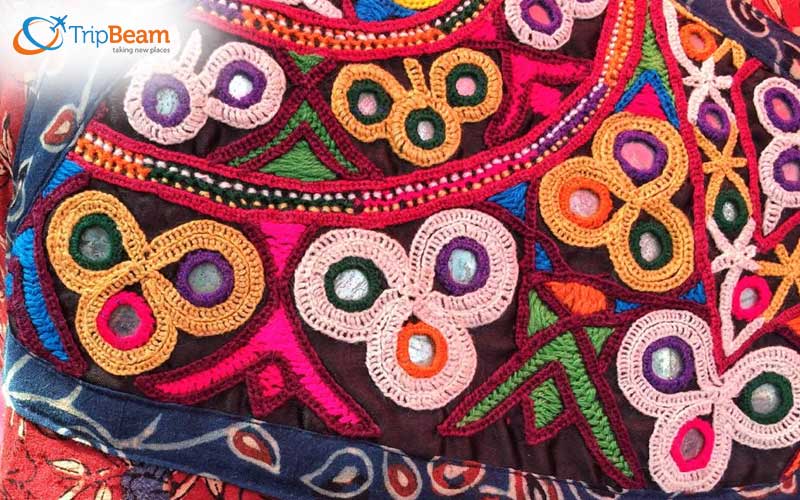
Kutchi embroidery styles, such as Ahir, Gotauv, Gotany, Jat-Garasia, Jat-Fakirani, Pakko, and Kathi, rely significantly on mirror work or “Sheeshedaar” stitching, with Rabari being a prime example. Intricate stitch patterns, including couches, herringbone, chains, and more, characterise and specialised talent. They use Abhla, or miniature mirrors, on a variety of materials such as cotton, silk, or Mashru, as well as metallic threads. Natural and everyday themes, geometric patterns, mythology, or traditional and local techniques inspire these crafts. If you are looking for USA to India flight deals, just go through Tripbeam.com to get an array of deals on flight booking.
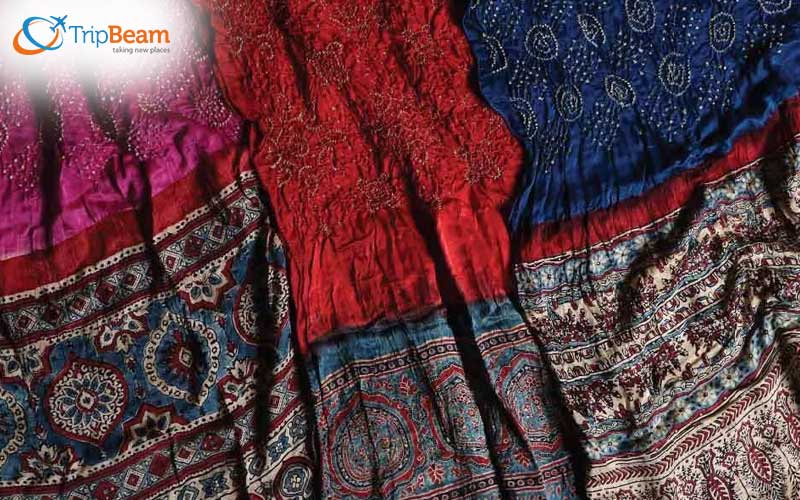
One of the earliest or most unique textile crafts in Gujarat is Bandhani Bandhej Tie & Dye, where a variety of fabrics, including cotton, silk, wool, and muslin, are dyed in an endless array of vibrant colours, including red, yellow, green, indigo, black, and white, to illustrate a wide range of designs and patterns, including Ambadal, Gharchola, Chandramukhi, Kalger, and Shikari.
The process includes knotting specks on fabric & immersing it in colourful dyes to produce highly patterned designs worn for both everyday and ceremonial garments. Popular production hubs like Jamnagar, Surendranagar, Kutch, and many more offer a broad spectrum of goods like wall hangings, bags, turbans, sarees, quilts, and others that are all fashioned with a variety of experimentally combined natural and artificial materials.
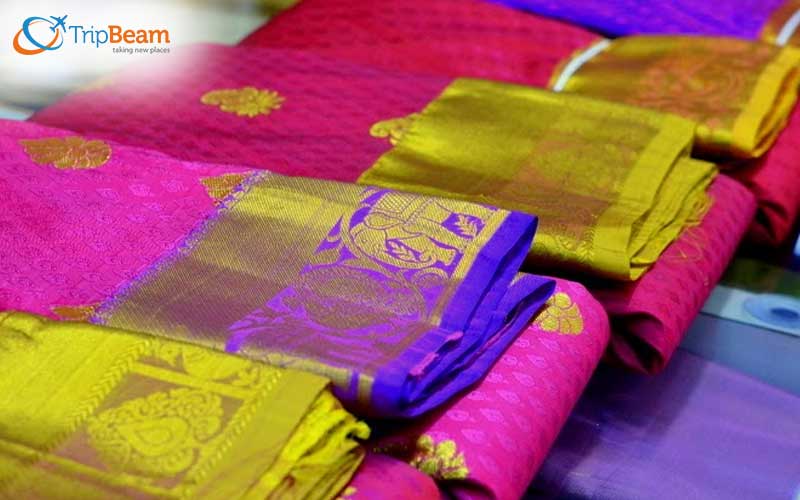
Silk looms have gained international recognition in Kancheepuram, Tamil Nadu, popularly known as the Silk City. Distinguished by their ageless elegance, these handloom weaves showcase contrasted Zardozi and Brocade work, gold borders, and self-borders on pure, processed mulberry silk yarn. Kanjivaram is another name for this craft.
The complicated method includes the Korvai weaving technique for contrast borders. We weave different portions independently and then interlace them together to create unique designs inspired by nature, mythology, temple images, paintings, and more. The Murukku-Pattu saree is well-known for its distinctive and excellent craftsmanship.
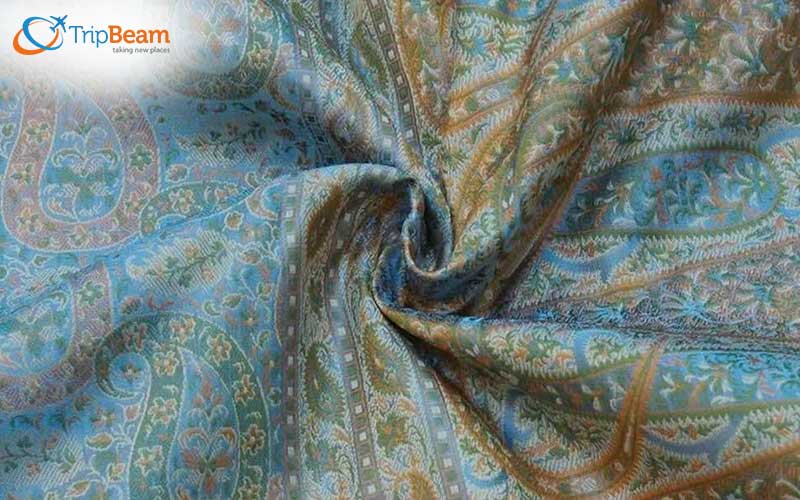
Mughal patronage began and flourished this magnificent material, which Banarasi silk weaving further enhanced, and people typically wear it as a gown, wrap, shawl, or even saree.
Elaborate tapestry weaves intricately incorporate brocaded elements into a Pashmina or Resham substrate, occasionally incorporating a small amount of polyester, using identical silk and polyester threads. Jamawar of Kashmir, believed to have originated in Persia, heavily incorporates Indian motifs, nature, geometric patterns, and classical designs such as the Kairy, Regabutas, Kirk but is, Jaldar, and others, with creative nuances incorporated and evolved, even though it is now a rare and dying art form.
Specialised textile crafts in India are an important part of our cultural traditions, but they have lost commercial worth and market prices as a result of the intensive work and knowledge required to create the products. It is up to us to resuscitate these historic crafts and give them the credit they deserve. Meanwhile, consider Tripbeam while booking last-minute flights from Canada to India.
Also Read: Dress Like a Local: What to Wear in India to Blend In
Tell us more details to help better





